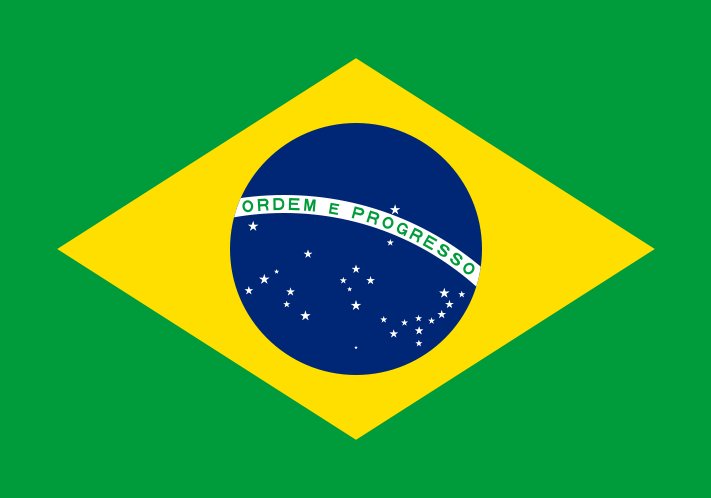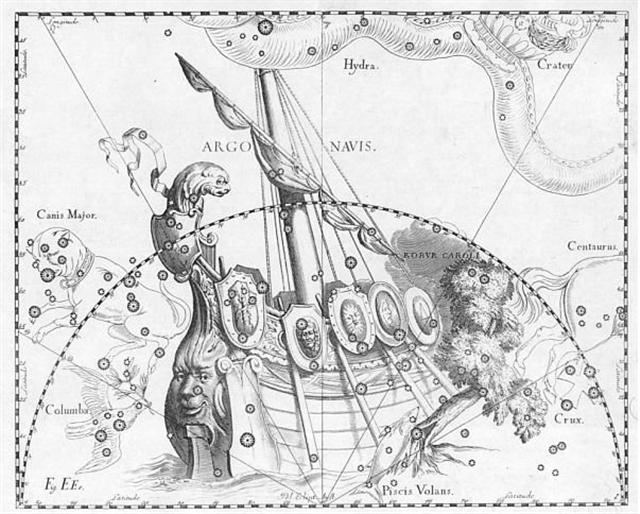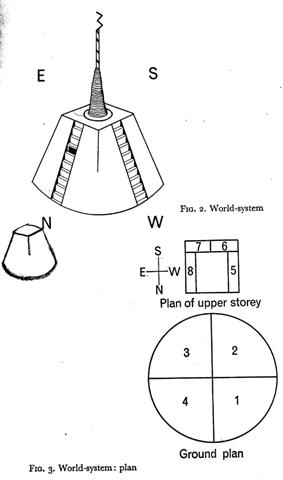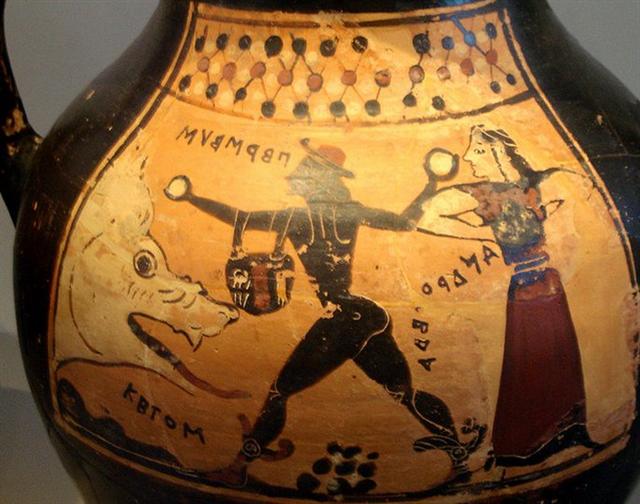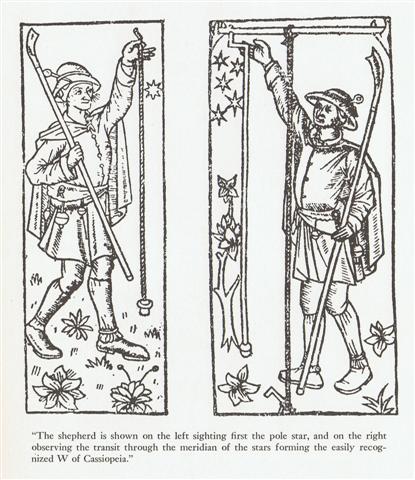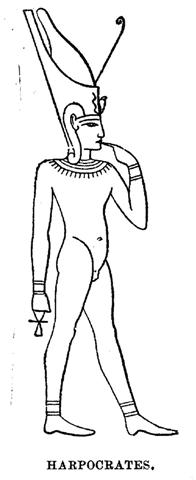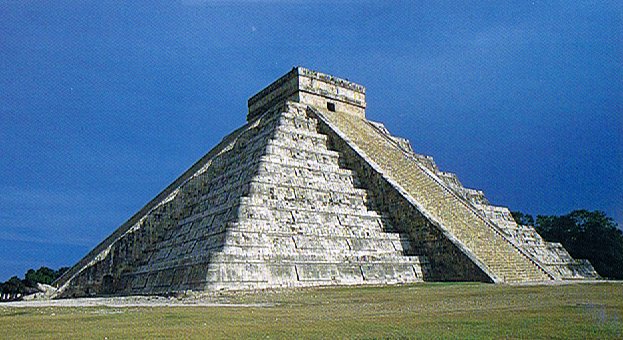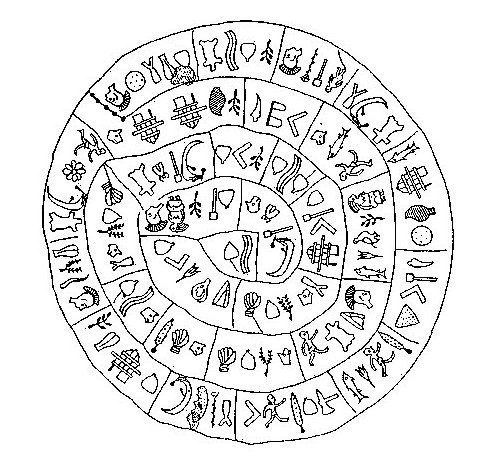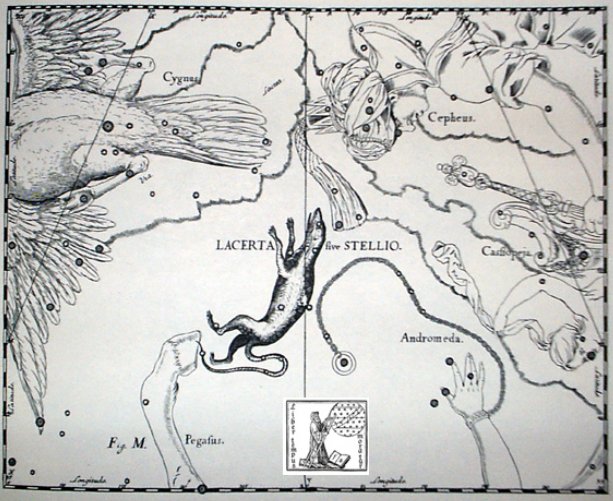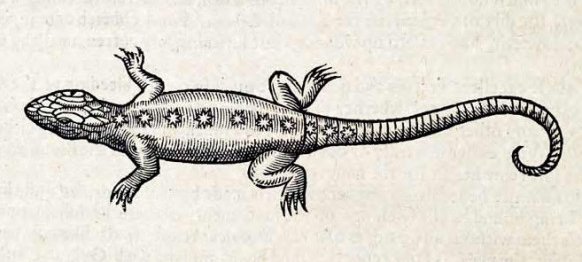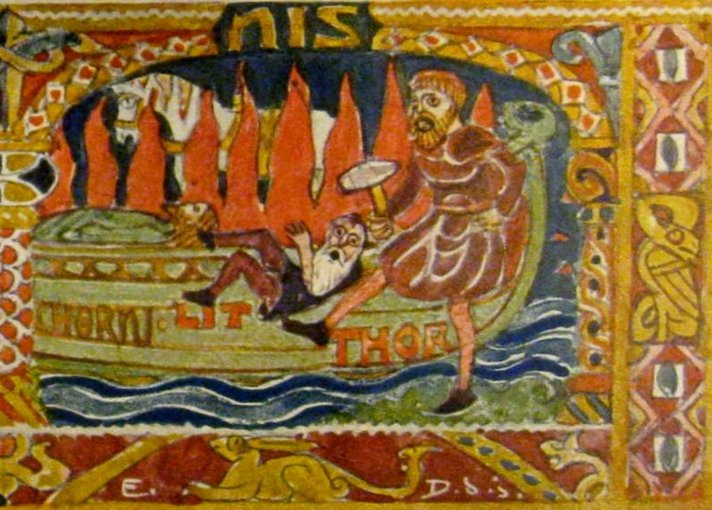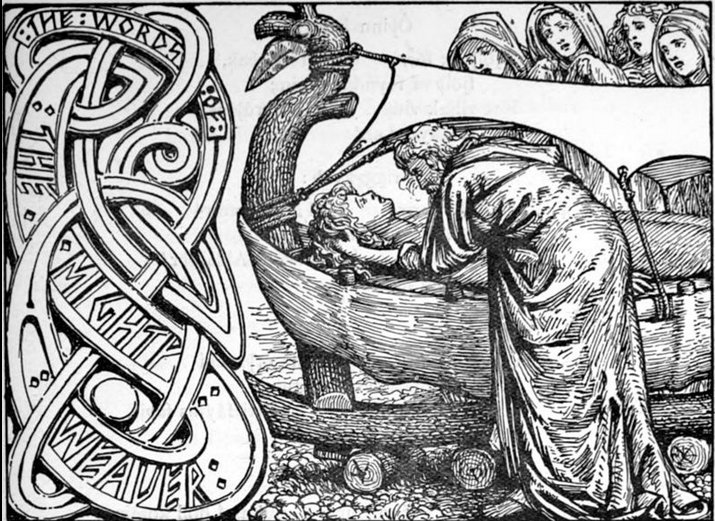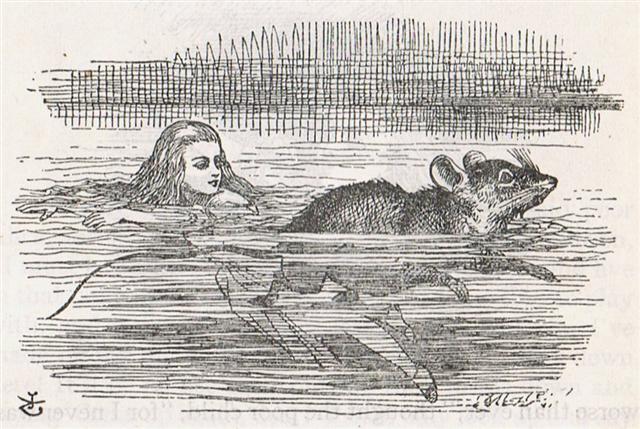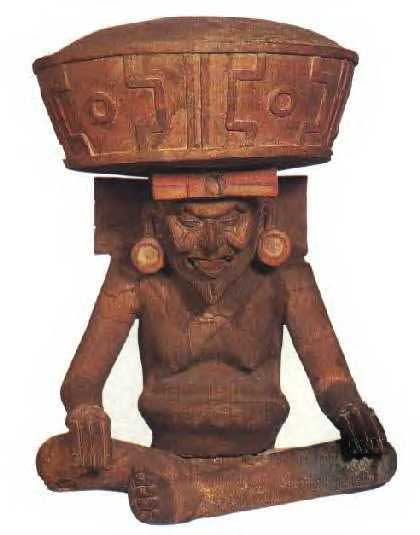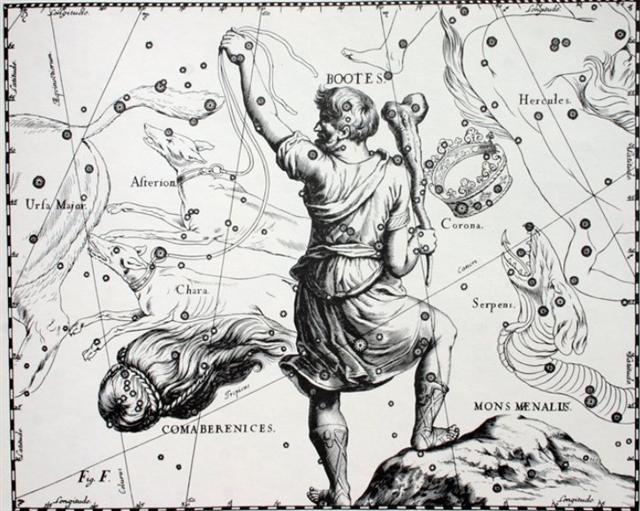253. I could have stopped here. However, we should remember how the planet Mars fascinated the ancients because of his regular withershins movement. This fact induces me to go on a little bit further:
From November 6 to his re-turn in January 20 we can count 365 + 20 - 310 (November 6) = 75 days of moving withershins. 75 + 16 = 91 → a quarter of 364. If we should view the year as a pair of half-years (misseri), then the same measure ought to be counted also at the opposite (nakshatra) side of the cycle of 364 days.
... Another name for Mercury was Hermes and Hermes Trismegisthos (thrice-mighty) could have referred to the fact that there were 3.141 * 115.88 = 364.0 days for the cycle of the Earth around the Sun. Although the calendar has 365 days for a year this is due to the fact that the Earth has to turn around an extra day in order to compensate for how the direction to the Sun changes during a year ... Which implies the total year (green grass + dry old straw) ... ín the second half of life, when, as Dr. Jung has so frequently stated, 'man's values and even his body tend to undergo a reversal into opposite'. Old men become womanish, old women mannish, the fear of life becomes a fear of death. And so now it is the dry branches, not the green, of the universal tree around which the heavens spin that must be grasped and painfully climbed ... should be prolonged by 2 * 16 = 32 days in order to achieve a correct map for the Golden Era of the Bull - when they had waited for the return of the morning star to become visible again after its close encounter with the Sun, which ideally occurred 16 days after the true heliacal date. 75 + 16 + 16 = 75 + 32 = 107 (= 123 - 16). The right ascension line for the South Pole star Dramasa was, as if by chance, precisely located at *32(0). The sign for zero was not used anciently. Nothing should not be presented as something.
... Allen has documented all his star culminations at 21h, which could be due to an effort of keeping the culminations at their proper places according to the ancients, 24h (spring equinox) - 21h = 3h = 24h / 8 = 45º. 3h corresponds to 366 / 8 = 45.75 of my right ascension days and *366 - *46 = *320 (Dramasa, σ Octantis) ...
When the iron Smith - alias the planet Mars according to the Chinese table of correspondences - fetched 'fire' for mankind
... All was now ready for departure except that there was no fire in the smithy. The ancestor slipped into the workshop of the great Nummo, who are Heaven's smiths, and stole a piece of the sun in the form of live embers and white-hot iron. He seized it by means of a 'robber's stick' the crook of which ended in a slit, open like a mouth. He dropped some of the embers, came back to pick them up, and fled towards the granary; but his agitation was such that he could no longer find the entrances. He made the round of it several times before he found the steps and climbed onto the flat roof, where he hid the stolen goods in one of the skins of the bellows, exclaiming: 'Gouyo!', which is to say. 'Stolen!'. The word is still part of the language, and means 'granary'. It is a reminder that without the fire of the smithy and the iron of hoes there would be no crops to store ...
We can here see the sign at the top end of the granary (the earth mountain) as a reference to the form of Cassiopeia, which changed, as if magically, from female to male and then back again. Cfr how the last letter of the withershins spelled name of Perseus has been written on the great 'bucket' below:
And we can put this in conjunction with the sign ingrained in front on the head gear of Harpocrates:
This sign (similar to the kava type of glyph although not a broad band but instead merely a sketched stream) ought to have indicated the constellation of Cassiopeia, from whose Breast (*8) the milk of the galaxy had flowed.
Thus the sign in the fore front of the head-gear of Harpocrates was presumably the sign of a running fluid.
On side b of the Phaistos Disc the central (top) part seems to illustrate a breast and a following stream:
And between 22h and 23h was the similar form of the constellation of Lacerta.
In this context we can imagine the iron (black) Smith fleeing with a piece of the Sun - lizards have a tendency to loose their tails - and this piece could then correspond to the separated little piece at right bottom in Gb7-30, which should then be put in contrast with the little separate piece at bottom left in Gb5-21:
Beyond the Breast and the Stream there was evidently a Ship (we can see on side b of the Phaistos Disc). →
A weaver has to move his shuttle back and forth → both to the right and withershins → both with the Sun and withershins (i.e. with the Moon) → nighttime with the planet Mars. 440 (Gb7-30) - 374 (Gb5-21) = 66 → 350 + 16 - 300. When a part of Phoenician mēm is broken off (like the tail of a lizard) the remainder will be less desireable: ... Man is demi-god: he always has either one foot or the other in the grave; woman is divine because she can keep both her feet always in the same place, whether in the sky, in the underworld, or on this earth. Man envies her and tells himself lies about his own completeness, and thereby makes himself miserable; because if he is divine she is not even a demi-goddess - she is a mere nymph and his love for her turns to scorn or hate. Woman worships the male infant, not the grown man: it is evidence of her deity, of man's dependence on her for life ...
At night time the flow went withershins, first up from the bottom of the Sea - water as expressed by a flipper or a fin;
... In the morning of the world, there was nothing but water. The Loon was calling, and the old man who at that time bore the Raven's name, Nangkilstlas, asked her why. 'The gods are homeless', the Loon replied. 'I'll see to it', said the old man, without moving from the fire in his house on the floor of the sea ...
And then beyond the arms (rima) of Mother Earth
and in order to finally arrive into the Sky there would be only a sketch (i.e. as the spirit of rima). We could also count withershins to the fleeing Head of the Medusa
... A man had a daughter who possessed a wonderful bow and arrow, with which she was able to bring down everything she wanted. But she was lazy and was constantly sleeping. At this her father was angry and said: 'Do not be always sleeping, but take thy bow and shoot at the navel of the ocean, so that we may get fire.' The navel of the ocean was a vast whirlpool in which sticks for making fire by friction were drifting about. At that time men were still without fire. Now the maiden seized her bow, shot into the navel of the ocean, and the material for fire-rubbing sprang ashore. Then the old man was glad. He kindled a large fire, and as he wanted to keep it to himself, he built a house with a door which snapped up and down like jaws and killed everybody that wanted to get in. But the people knew that he was in possession of fire, and the stag determined to steal it for them. He took resinous wood, split it and stuck the splinters in his hair. Then he lashed two boats together, covered them with planks, danced and sang on them, and so he came to the old man's house. He sang: 'O, I go and will fetch the fire.' The old man's daughter heard him singing, and said to her father: 'O, let the stranger come into the house; he sings and dances so beautifully.' The stag landed and drew near the door, singing and dancing, and at the same time sprang to the door and made as if he wanted to enter the house. Then the door snapped to, without however touching him. But while it was again opening, he sprang quickly into the house. Here he seated himself at the fire, as if he wanted to dry himself, and continued singing. At the same time he let his head bend forward over the fire, so that he became quite sooty, and at last the splinters in his hair took fire. Then he sprang out, ran off and brought the fire to the people ...
73 + 27 = 100 ↔ 27 * 73 |
|||||||||||||||||||||||||||||||||||||||||||||||||||||||||||||||||||||||||||||||||||||||||||||||||||||||||||||||||||||||||||||||||||||||||||||||||||||||||||||||||||||||||||||||||||||||||||||||||||||||||||||||||||||||||||||||||||||||||||||||||||||||||||||||||||||||||||||||||||||||||||||||||||||||||||||||||||||||||||||||||


